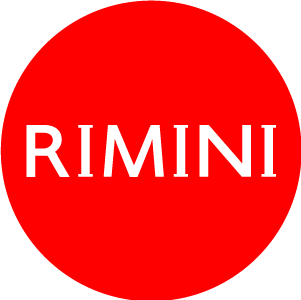The oldest settlement in the area dates back to about a million years ago and was located on the current hill of Covignano where we can find traces of the Villanovian culture (ninth /sixth century B.C.). But the official date of foundation of Rimini is 268 B.C. when the Senate of Rome sent 6000 settlers to establish the new settlement. The colony was called Ariminum, named after the river Marecchia (Ariminus): Rimini was born. At the beginning it was a strategic colony, then (in 90 BC) it became municipium. Finally, a thriving city of the Roman Empire with a large forum, today's Piazza Tre Martiri. Two central streets, the cardo maximus (via Garibaldi and via IV Novembre) and the decumanus maximus (corso d'Augusto). A large amphitheater (only the Colosseum was larger) and triumphal monuments: the Tiberius Bridge, the Arch of Augustus. Finally, a rarity: the Surgeon's House, the only medical clinic in the world of ancient Rome that miraculously remained intact until today. Among the great works decided by the Senate of Rome there are the two consular roads: the Via Flaminia and the Via Emilia. The first connects Rome to Rimini and ends at the Augustus Arch. The Via Emilia starts from the Tiberius Bridge and runs to Piacenza.
In the Middle Ages (12th century) Rimini became a Comune (Municipality) and in 1204 the pulsating heart of the city moved to Piazza Cavour. During that period great artists worked in Rimini, starting with Giotto and the 14th-century Rimini School. In the Renaissance, Rimini became the “Signoria” (Lordship) of the Malatestas. The most famous is Sigismondo Pandolfo, who built Castel Sismondo and the Tempio Malatestiano. Many artists arrived in Rimini. among these Piero della Francesca, Leon Battista Alberti, Giovanni Bellini.
Between 1500 and 1600 Rimini is part of the Papal State. In 1700 functional architectural works are realized, such as the Pescheria (the old fish market) and the white lighthouse on the canal port. In 1800 Napoleon broke down the churches, thus dispelling a huge heritage of art. In 1815 Gioacchino Murat incites the Italians to independence.
In 1843 the first bathing establishment was inaugurated and so began the Italian and international history of seaside tourism. Despite the war and the bombings, Rimini people rolled up their sleeves and began to rebuild. Rimini is still today one of the most famous beaches in Europe and one of the most loved and desired destinations by Italian and foreign tourists. Today Rimini is also home to a very strong congress and fair industry. The technological “Palacongressi” is the largest in Italy (9000 seats), while the new Fair district, designed by great architects, is among the most advanced in Europe.


